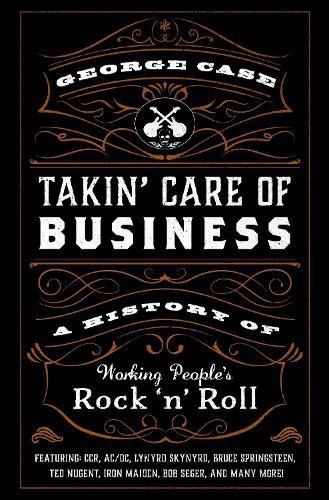Readings Newsletter
Become a Readings Member to make your shopping experience even easier.
Sign in or sign up for free!
You’re not far away from qualifying for FREE standard shipping within Australia
You’ve qualified for FREE standard shipping within Australia
The cart is loading…






By the early 1970s, practically everyone under a certain age liked rock music, but not everyone liked it for the same reasons. We typically associate the sounds of classic rock ‘n’ roll with youthful rebellion by juvenile delinquents, student demonstrators, idealistic hippies, or irreverent punks. But in this insightful and timely book, author George Case shows how an important strain of rock music from the late 1960s onward spoke to DL and represented an idealized self-portrait of DL a very different audience: the working-class ‘Average Joes’ who didn’t want to change the world as much as they wanted to protect their perceived place within it. To the extent that
working-class populism describes an authentic political current, it’s now beyond a doubt that certain musicians and certain of their songs helped define that current. By now, rock ‘n’ roll has cast a long shadow over hundreds of millions of people around the world DL not just over reckless kids, but over wage-earning parents and retired elders; not just over indignant youth challenging authority, but over indignant adults challenging their own definition of it. Not only have the politics of rock fans drifted surprisingly rightward since 1970; some rock, as Case argues, has helped reset the very boundaries of left and right themselves. That God, guns, and Old Glory can be understood to be paid fitting tribute in a heavy guitar riff delivered by a long-haired reprobate in blue jeans DL but that #Me Too, Occupy Wall Street or Black Lives Matter might not DL hints at where those boundaries now lie.
$9.00 standard shipping within Australia
FREE standard shipping within Australia for orders over $100.00
Express & International shipping calculated at checkout
By the early 1970s, practically everyone under a certain age liked rock music, but not everyone liked it for the same reasons. We typically associate the sounds of classic rock ‘n’ roll with youthful rebellion by juvenile delinquents, student demonstrators, idealistic hippies, or irreverent punks. But in this insightful and timely book, author George Case shows how an important strain of rock music from the late 1960s onward spoke to DL and represented an idealized self-portrait of DL a very different audience: the working-class ‘Average Joes’ who didn’t want to change the world as much as they wanted to protect their perceived place within it. To the extent that
working-class populism describes an authentic political current, it’s now beyond a doubt that certain musicians and certain of their songs helped define that current. By now, rock ‘n’ roll has cast a long shadow over hundreds of millions of people around the world DL not just over reckless kids, but over wage-earning parents and retired elders; not just over indignant youth challenging authority, but over indignant adults challenging their own definition of it. Not only have the politics of rock fans drifted surprisingly rightward since 1970; some rock, as Case argues, has helped reset the very boundaries of left and right themselves. That God, guns, and Old Glory can be understood to be paid fitting tribute in a heavy guitar riff delivered by a long-haired reprobate in blue jeans DL but that #Me Too, Occupy Wall Street or Black Lives Matter might not DL hints at where those boundaries now lie.